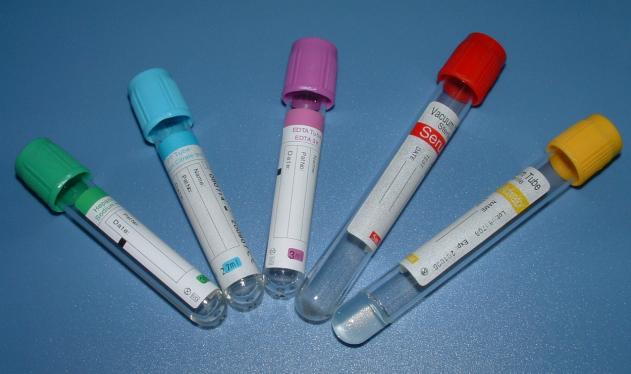In the world of medicine, precision is paramount. From diagnosing diseases to monitoring overall health, accurate blood testing plays a pivotal role. However, have you ever wondered why blood collection tubes come in various colors? These colors are not just for aesthetics; they hold valuable information for medical professionals. This article will delve into the significance of the colors on blood collection tubes and what they mean for your health.
Introduction
Vacuum Blood Collection Tube Production Line tubes are ubiquitous in medical settings, but their colors often make patients curious. These colors are vital, helping healthcare professionals ensure accurate test results and diagnoses. This article will unravel the mystery of blood collection tube colors and their significance in healthcare.
The Role of Blood Collection Tubes
Blood collection tubes, also known as vacutainers, are essential tools in the field of laboratory medicine. They provide a sterile environment for collecting and preserving blood samples for various diagnostic tests. These tests can range from basic blood counts to complex genetic analyses. The choice of tube color is not arbitrary; it is carefully selected based on the type of test to be performed.
Why Are There Different Colors?
Blood collection tubes come in a spectrum of colors, each indicating the presence of specific additives or coatings. Let’s explore the significance of some common tube colors:
Red
The red-top tube is perhaps the most recognizable. It contains no additives and is used for collecting serum or clotted blood samples. This tube is commonly used for tests such as lipid panels and glucose levels.
Lavender
Lavender-top tubes contain the anticoagulant ethylenediaminetetraacetic acid (EDTA). This additive prevents blood from clotting and is often used for hematology tests, blood typing, and blood cell counts.
Light Blue
Light blue-top tubes contain sodium citrate, an anticoagulant that is crucial for coagulation studies. These tubes are used to assess blood clotting disorders and monitor patients on anticoagulant therapy.
Green
Green-top tubes are heparinized, meaning they contain heparin, an anticoagulant. They are used for various chemistry tests, including electrolytes and arterial blood gases.
Gray
Gray-top tubes are primarily used for glucose testing. They contain a fluoride-based anticoagulant that inhibits glycolysis, preserving blood glucose levels.
Interpretation of Color Codes
Now that we’ve covered the basics, let’s delve deeper into what each color means for the medical professional conducting the tests.
Red Tube
The absence of additives in red tubes allows for serum separation. This is crucial for tests that require clear, cell-free serum, such as liver function tests.
Lavender Tube
Lavender tubes with EDTA are used in hematology to prevent blood clotting. This is especially important for accurate cell counts and morphology assessment.
Light Blue Tube
Light blue tubes are essential for coagulation studies. They help determine the time it takes for blood to clot, which can be critical for patients on anticoagulant therapy.
Green Tube
Green-top tubes are used in chemistry tests. Heparin prevents clotting and ensures accurate measurement of analytes like electrolytes.
Gray Tube
Gray tubes are all about preserving blood glucose levels. The fluoride additive inhibits glycolysis, keeping glucose stable until testing.
Common Tests and Tubes
Different tests require specific tubes. Here are some examples:
- A complete blood count (CBC) requires a lavender-top tube with EDTA.
- For a basic metabolic panel (BMP), a green-top tube is used.
- Coagulation studies demand light blue-top tubes with sodium citrate.
- Glucose testing necessitates gray-top tubes with fluoride.
Proper Blood Collection Procedures
To ensure accurate results, it’s crucial to follow proper blood collection procedures. This includes using the right tube, filling it to the correct level, and gently inverting it to mix the blood with any additives.
The Evolution of Blood Collection Tubes
The history of blood collection tubes is fascinating. They have come a long way from simple glass containers to the vacuum-sealed tubes we use today.
Ensuring Accuracy in Blood Testing
Accurate test results are vital for medical decisions. Using the appropriate blood collection tube is the first step in ensuring the reliability of diagnostic tests.
The Importance of Patient Awareness
As patients, being aware of the various blood collection tubes and their implications can empower us to ask informed questions and participate in our healthcare decisions.
Conclusion
In the world of medicine, precision is non-negotiable. Vacuum Blood Collection Tube Production Line‘s distinctive colors and additives are essential in achieving accurate diagnostic results. Understanding the meaning behind the colors on these tubes not only demystifies the process but also emphasizes the importance of proper blood collection and testing procedures.
Frequently Asked Questions
1. What is the purpose of using different colored blood collection tubes?
Different colors indicate the presence of specific additives or coatings in the tubes, which are necessary for different types of blood tests.
2. Can I use any tube for a blood test?
No, using the wrong tube can lead to inaccurate results. It’s essential to use the tube specified for the particular test being conducted.
3. Are there any risks associated with using the wrong tube?
Yes, using the wrong tube can result in inaccurate test results, which may lead to misdiagnosis or incorrect treatment decisions.
4. How should I prepare for a blood test?
Follow your healthcare provider’s instructions, which may include fasting for specific tests. It’s also essential to inform them of any medications you’re taking.
5. Where can I find more information about specific blood tests?
Your healthcare provider or the laboratory conducting the test can provide detailed information about the specific blood tests you need.
In this article, we’ve unraveled the significance of the colors on blood collection tubes, shedding light on their role in accurate medical diagnoses. Armed with this knowledge, you can now appreciate the precision that goes into every blood test and its crucial role in healthcare.
